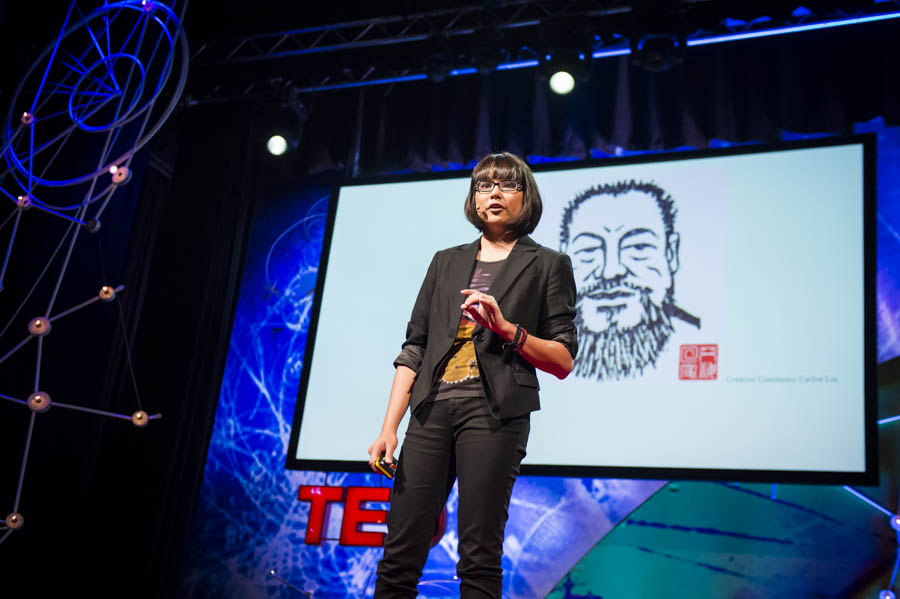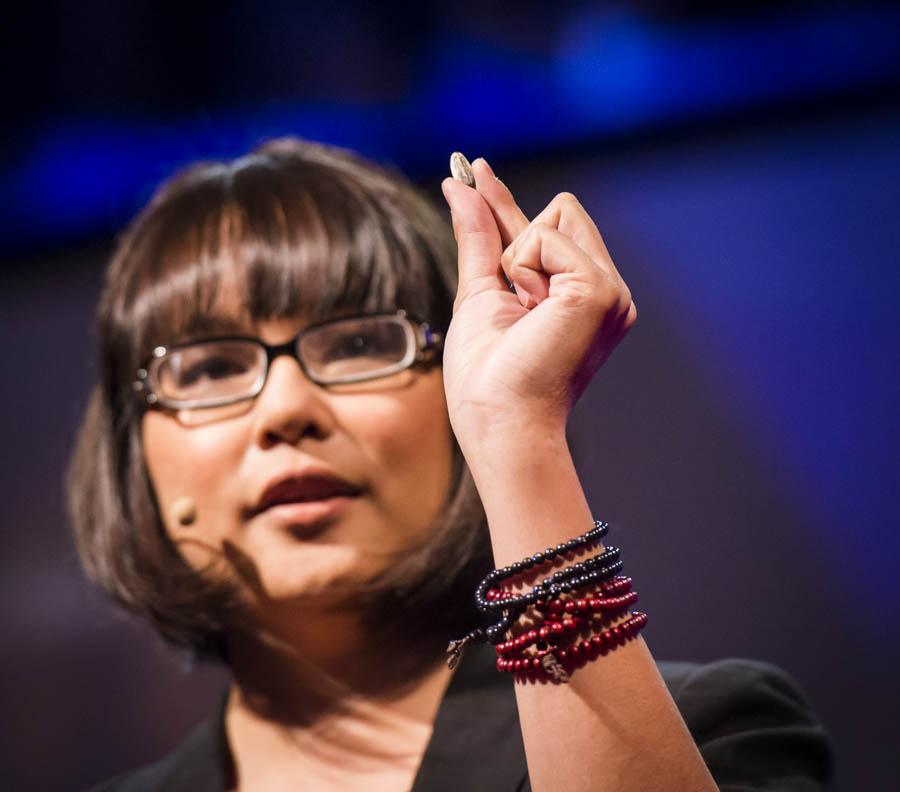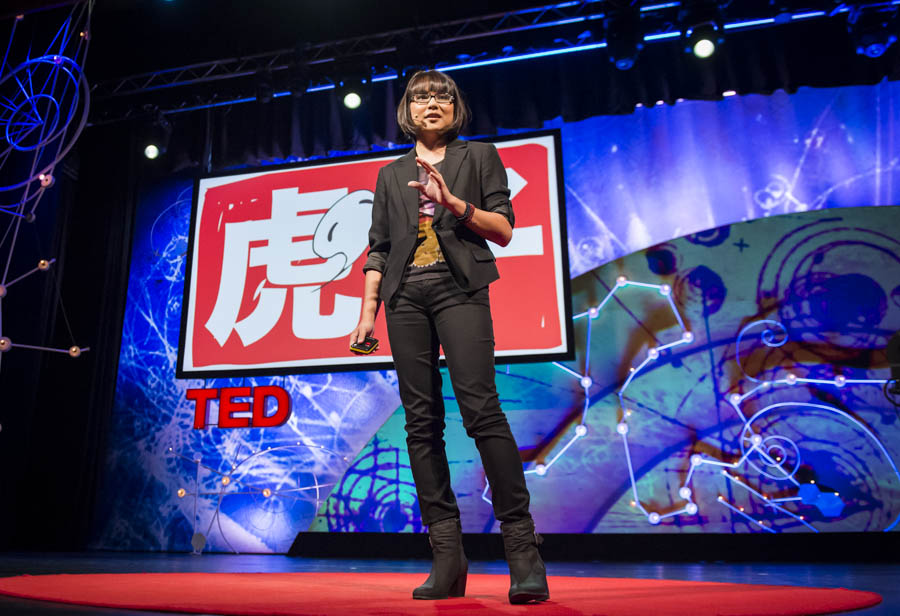“This is what happens when you take the addictive power of an LOLcat and apply it in a ceonsorship state,” says An Xiao Mina, a writer, technologist and researcher who studies Chinese memes. On the TEDGlobal 2013 stage, she shares the moment that led her to this unusual specialty.
Two years ago, China’s government imposed a severe crackdown in which many human rights activists were rounded up. In April 2011, Chinese artist Ai Weiwei disappeared for 81 days after being detained at the Beijing airport. During that time, many of his associates were brought in for questioning, others went missing and still others became the subject of wiretaps. Meanwhile, anyone who posted Weiwei’s name or initials online in Chinese social media found their message deleted and, sometimes, their account gone. It was then that Mina noticed an interesting thing pop up on social media — sunflower seeds.
Sunflower seeds may be a popular nosh in China, but these seeds weren’t simply a snack — they referenced Weiwei’s installation of one million porcelain sunflower seeds, hand-painted by 1,600 Chinese artisans, at the Tate Modern in 2010. Posting a sunflower seed was an un-censorable way to show support for Weiwei. As Mina explains, it would be like censors in the United States trying to follow and suppress references to potato chips.
This is what internet memes in China do — they use visual motifs, leverage puns and dream up new words in order to get out a message while avoiding censorship or retribution. “It turns out that internet culture — a culture of rapid remixing and sharing of memes, or cultural units — is a compelling force against censorship,” Mina says. “A peek behind the curtain of the world’s most censored internet has so many corners of creativity as people find new ways to speak out.” (Check out this TED Blog piece looking at 8 examples of Chinese memes, written with Mina’s help last year.)
Of course this doesn’t just happen in China — it’s happening around the world. Says Mina, “Memes are used to talk about police brutality, government corruption, the problem of pollution.” She gives an example from Uganda, where 30,000 government goats had gone missing. On Twitter, a new hashtag emerged: #WhereAreTheGoats. Here is an example.
Humor became a way to talk about political issues. Mina quotes a colleague saying, “We need this humor to remind us of the banality of the social and political issues around us.”
Next, Mina brings us to Kenya during the 2013 elections, when the foreign press focused on skirmishes at polling places in their coverage — rather than the fact that the grand majority of polling places were peaceful. Most Kenyans simply stood in lines for hours. So popped up the Twitter hashtag #TweetLikeaForeignJournalist:
These tweets drew attention to the strange media representation, and perhaps even compelled more balanced coverage.
On the TEDGlobal stage, Mina brings us back to China. Chen Guangcheng is a blind artist who spent four years in prison for his civil rights work. Upon release, he was put under house arrest. When he escaped in April 2012, memes began spreading across the Chinese internet in support of him. His signature sunglasses became a powerful symbol, people snapping photos of themselves wearing a similar pair. Around the same time, people in the United States started a similar meme after 17-year-old Trayvon Martin was shot and killed in Florida — a senseless shooting blamed, in part, on his wearing a hooded sweatshirt. All of a sudden, Trayvon’s hoodie became a part of the cultural landscape — and a powerful symbol of unity.
“This is a vernacular that’s both global in scope and really quite personal and local in its context,” says Mina. “These memes are about more than just humor. They do what art and visual expression have always done — make us feel less alone.”
She pauses.
“These memes, these jokes, these fuzzy creatures — this is the street art of our social web,” says Mina. “These are the posters we place on our digital windows. Through them, we are learning to create media environment that represents who we are and what we value.”



Comments (9)
Pingback: Images of Truth from Christine Blasey Ford’s Testimony and What They Mean – jomaliaband.com
Pingback: Social – Fernanda Hernandez
Pingback: The Meaning of MEMES | ACME Media Werks
Pingback: Ai Weiwei in Canada, … almost | 中国大好き
Pingback: Miscellany. 06.25.13. | C-Monster
Pingback: The Civic Beat: World Report » Thank you, TEDGlobal 2013. Let’s move it forward.
Pingback: Thank you, TEDGlobal 2013. Let’s move it forward. | an xiao studio: the virtual studio of an xiao mina
Pingback: TEDGlobal – Day 4 | TEDxNYU